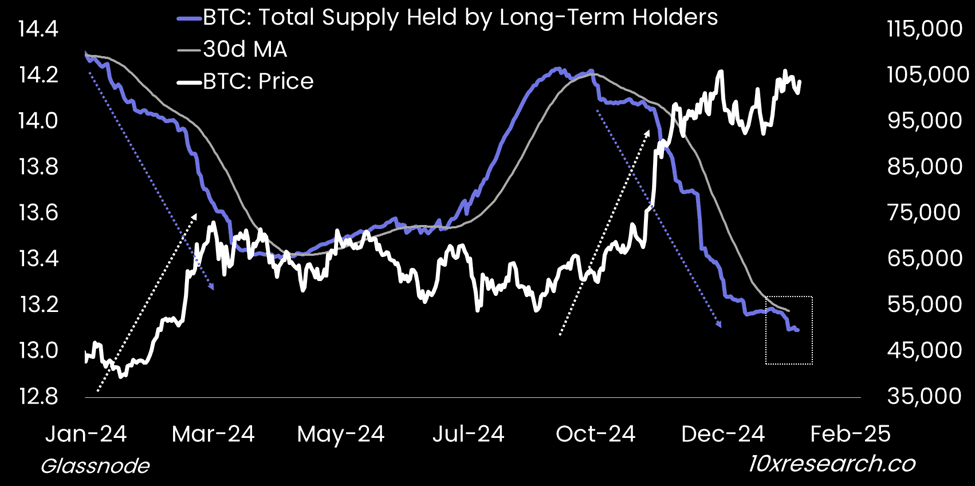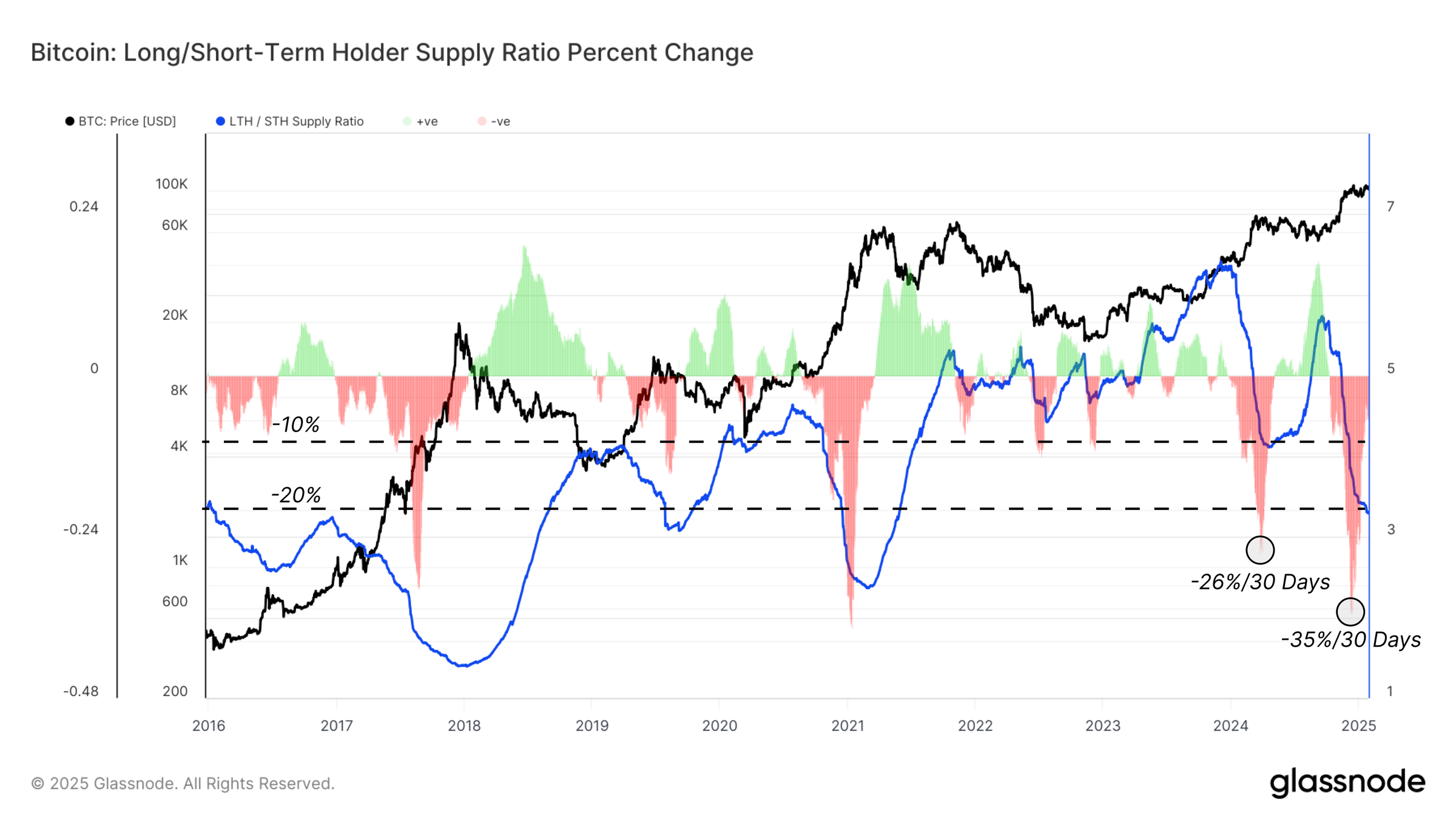Uncategorized
Long-Term Bitcoin Holders Are Spending Their BTC, A Bullish Signal, Analysts Say

If someone told you that stock market investors are offloading their cherished holdings, you will most likely interpret it as a sign of an impending market downturn.
The narrative, however, differs in the crypto market, where such selling indicates bullishness, according to analysts observing historical trends in the supply held by long-term investors or wallets holding coins for at least 155 days or over five months.
«Based on our analysis, sharp declines in long-term holder supply (purple line) have frequently coincided with strong bitcoin rallies (white line), as seen in Q1 and Q4 of 2024. As long as long-term holders continue reducing their balances, Bitcoin remains at risk of a short squeeze to the upside,» Markus Thielen, founder of 10x Research, said in a report shared with CoinDesk.

The total supply held by these wallets has dropped to roughly 13 million BTC. According to analytics firm Glassnode, over 1 million BTC have changed hands during the recent price rise above $100,000 as short-term traders snapped up the long-term holder distribution.
«During the recent rally above $100K, 1.1M BTC have transferred from long-term to short-term holders, representing an impressive inflow of demand to absorb this supply at prices above $90K,» Glassnode said in its weekly report.
Note, however, that the pace at which long-term holders are selling has slowed. This slowdown is evident from the monthly rate of change in the long-term to short-term holder supply ratio. It’s no longer as harmful as it was earlier this month, indicating a more measured approach to selling by long-term holders.

Exchange balance slides
The number of BTC held in wallets tied to centralized exchanges has declined to 2.7 million BTC from over three million about six months ago, according to Glassnode.
The exodus of BTC from exchanges, which results in reduced availability of coins for quick sales, is widely viewed as a bullish indicator. The dynamics, however, have changed since the debut of spot ETFs in the U.S. a year ago.
«While many interpret this as a form of supply shock caused by a mass of coins being withdrawn by individual investors—potentially creating upward price pressure—we believe the majority of this decline stems from coins reshuffling into ETF wallets managed by custodians like Coinbase,» Glassnode said.
In other words, these coins have ended up in an ETF, an alternative investment vehicle that is liquid or active and can be bought and sold just as quickly as actual coins.
Per Glassnode, the exchange balance adjusted for coins that have been moved to alternative vehicles is over 3 million BTC.
Uncategorized
Elon Musk vs. the regulators
Welcome back to TechCrunch Mobility, your hub for all things “future of transportation.”
Uncategorized
Nvidia’s AI empire: A look at its top startup investments
Over the last two years, Nvidia has used its ballooning fortunes to invest in over 100 AI startups. Here are the giant semiconductor’s largest investments.
Uncategorized
Dating app Cerca will show how Gen Z really dates at TechCrunch Disrupt 2025
Cerca is a dating app that sets users up with mutual friends.
-

 Business12 месяцев ago
Business12 месяцев ago3 Ways to make your business presentation more relatable
-

 Fashion12 месяцев ago
Fashion12 месяцев agoAccording to Dior Couture, this taboo fashion accessory is back
-

 Entertainment12 месяцев ago
Entertainment12 месяцев ago10 Artists who retired from music and made a comeback
-

 Entertainment12 месяцев ago
Entertainment12 месяцев ago\’Better Call Saul\’ has been renewed for a fourth season
-

 Entertainment12 месяцев ago
Entertainment12 месяцев agoNew Season 8 Walking Dead trailer flashes forward in time
-

 Business12 месяцев ago
Business12 месяцев ago15 Habits that could be hurting your business relationships
-

 Entertainment12 месяцев ago
Entertainment12 месяцев agoMeet Superman\’s grandfather in new trailer for Krypton
-

 Entertainment12 месяцев ago
Entertainment12 месяцев agoDisney\’s live-action Aladdin finally finds its stars


